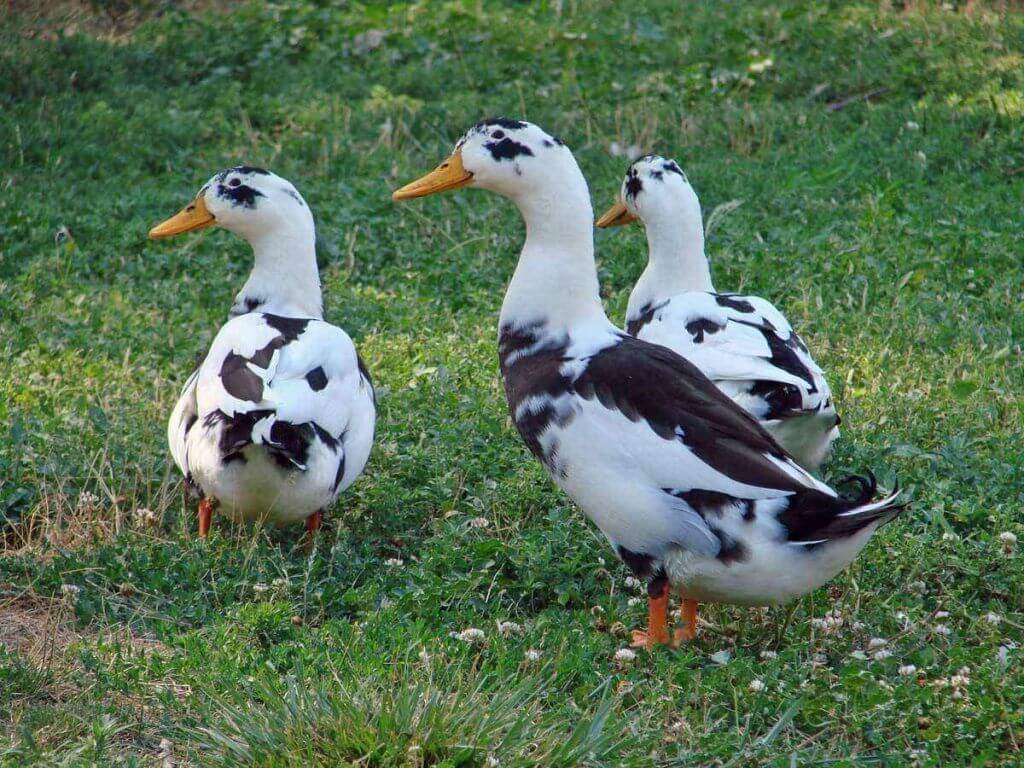Ancona Duck

Alternative Names
Ancona Duck
Measurements
| Feature | Male | Female |
|---|---|---|
| Length | 60–66 cm (24–26 in) | 60–66 cm (24–26 in) |
| Weight | 2.7–2.9 kg (6–6.5 lb) | 2.3–2.7 kg (5–6 lb) |
| Wingspan | Not well documented | Not well documented |
Status
The Ancona is a rare domestic duck breed. It is not recognized by major poultry associations and is considered at risk due to low breeding populations. Conservation breeders are encouraged to help preserve it.
Identification
A medium-sized duck with a sturdy body and a unique broken-color pattern. The feathers are mostly white with irregular patches of black, blue, chocolate, silver, or lavender. Each duck has a different pattern, making no two birds alike. The bill is usually yellow with dark spots, and the legs are orange with black markings.
Voice
They make soft quacking sounds. Females are louder and clearer, while males have a quieter, raspier call.
Diet
Omnivorous. They forage well and eat grasses, insects, snails, slugs (especially large banana slugs), and leftover grains. They also do well on regular poultry feed.
Distribution
Originally believed to come from England, but now most evidence shows the breed was developed in the United States in the early 1900s. Today, it is mainly found on small farms in North America and Europe.
Habitat
Lives comfortably on farms, homesteads, and near ponds or grassy areas. They like open spaces for foraging and calm water for swimming. They do not tend to wander far from home.
Breeding
Females lay around 210–280 eggs per year in colors like white, cream, blue, or green. They rarely go broody, so eggs are often hatched in incubators. They grow quickly and can also be raised for meat.
Wintering
They are hardy and can handle cold weather if given shelter from wind and frozen ground. They do not migrate or fly long distances.
Conservation
Their numbers are low, and they are considered a breed in need of protection. Their gentle nature, good egg production, and quality meat make them valuable for small farms and conservation programs.
